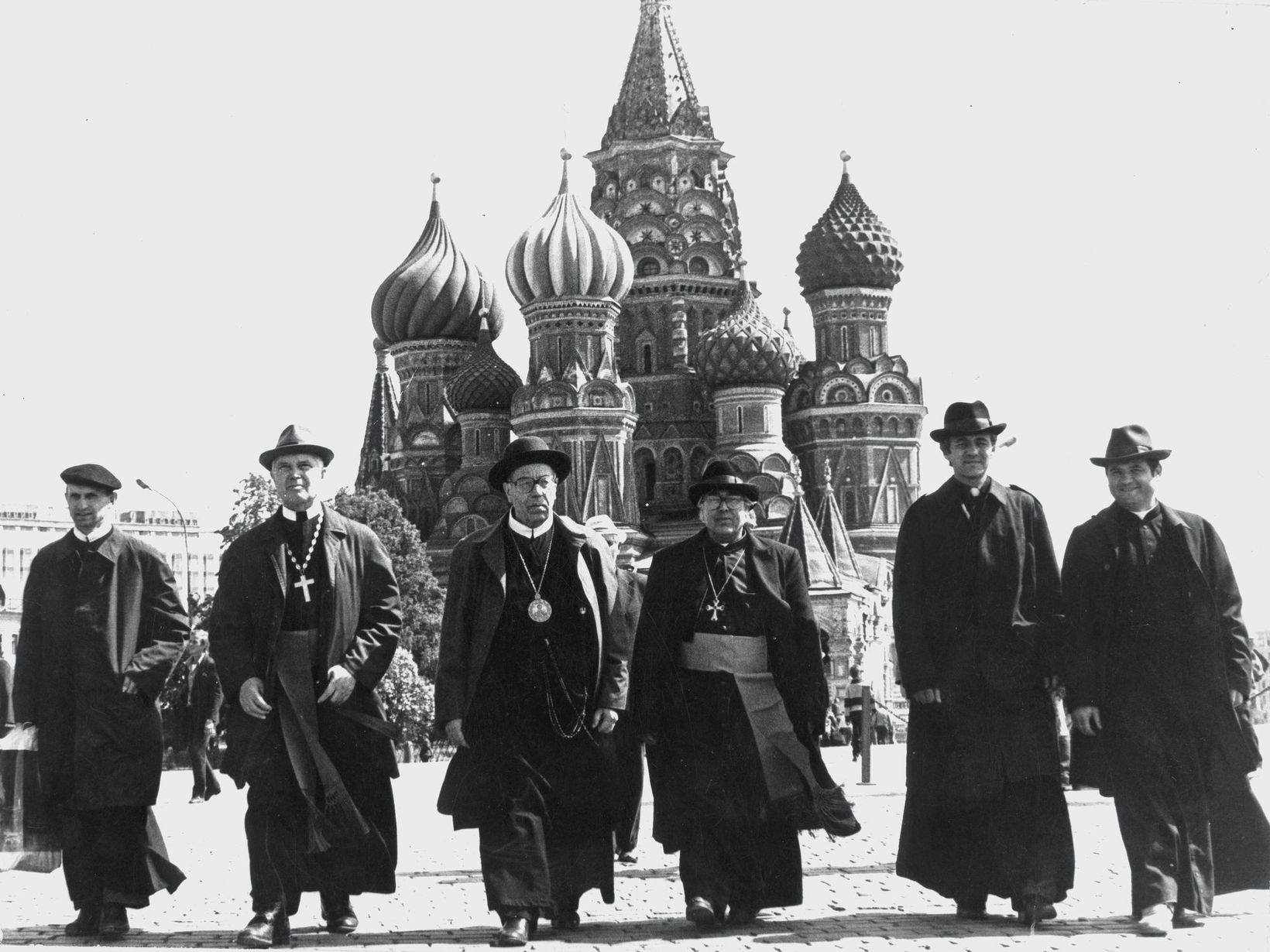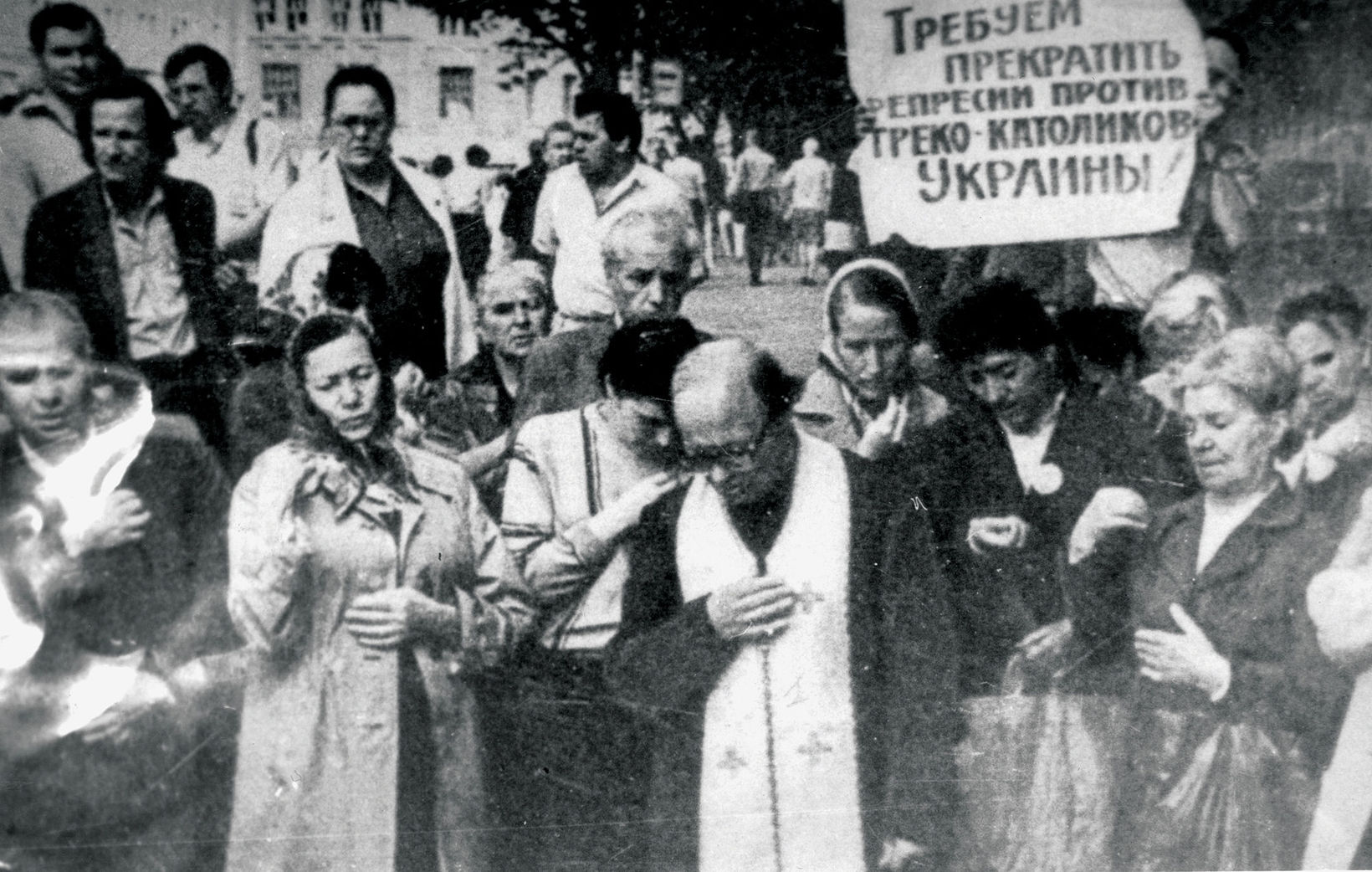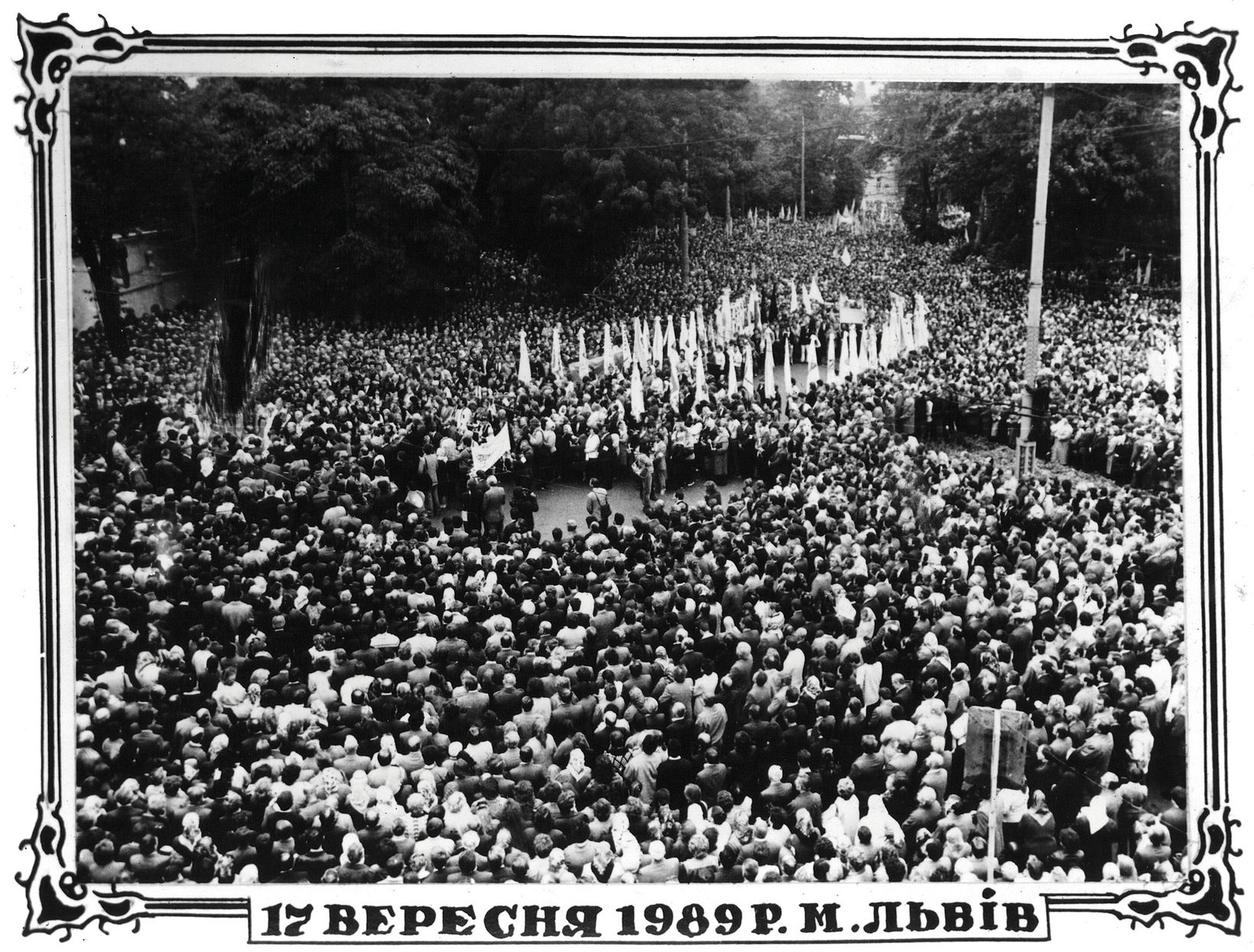10. Revival of the Church 1989
 Bishops and Priests of the Catacomb Church in Moscow, May 18, 1989
Bishops and Priests of the Catacomb Church in Moscow, May 18, 1989
During the period of democratization in the Soviet Union in the second half of the 1980s under the leadership of Mikhail Gorbachev, Greek-Catholics decided that they would no longer put up with injustice against the Church. The harbinger of legalization of the UGCC was the August 4, 1987 public statement by a group of 23 priests and faithful under the leadership of Bishop Pavlo Vasylyk that the Church was leaving the underground. At the end of that year Greek-Catholic activists formed the Committee for the Protection of Rights of the Ukrainian Catholic Church, led by former political prisoner Ivan Hel. This committee was the legal successor of the Ukrainian religious human rights organization “Initiative Group for the Protection of Rights of Believers and the Church,” founded in 1982 and headed by Yosyp Terelya and Vasyl Kobryn. The leaders set a single goal — the legalization of the UGCC, which was planned to be achieved through the “awakening” of Ukrainian society and the widest possible representation of the problem faced by Greek-Catholics to the Soviet authorities and the global community.
The Committee began collecting signatures for a petition demanding the official recognition of the UGCC. About 120,000 signatures were collected over the period of 1988–1989.
Open-air worship services were held in the towns and villages across western Ukraine. Initially, they drew relatively small numbers of faithful, but they eventually grew into thousand-strong rallies. A large number of faithful gathered for celebration of the 1000th anniversary of the Baptism of Rus’ in July 1988 in the villages of Hrushiv and Zarvanytsya under the leadership of Bishop Pavlo Vasylyk, Fathers Volodymyr Viytyshyn, Yosyp Moroz, Ivan Senkiv, Taras Senkiv, Hryhory Simkaylo, Mykola Simkaylo, and others. Thousands gathered in Lviv for a solemn divine service to honor the 175th anniversary of the birth of the poet and artist Taras Shevchenko in 1989, which was officiated by the Orthodox and Greek-Catholic priests Mykhailo Nyskohuz and Mykhailo Voloshyn. Another massive event honored the memory of Fr. Markian Shashkevych in the village of Pidlyssia on August 6, 1989.
 The Faithful of the UGCC Demand the Legalization of the Church. Moscow, 1989
The Faithful of the UGCC Demand the Legalization of the Church. Moscow, 1989
In May 1989 in the heart of Lviv near the former monastery of the Discalced Carmelites, Greek-Catholic priests began performing Liturgy every Sunday. Also, at the cemeteries of major western Ukrainian cities crowded memorial services were held in honor of the fighters who died for the freedom of Ukraine. The most significant was the march trough the streets of Lviv to St. George Cathedral on September 17, 1989. The marchers demanded religious freedom for Greek-Catholics.
That same year saw an unprecedented hunger strike of Greek-Catholics in Moscow’s Arbat, started by the bishops Pavlo Vasylyk, Sophron Dmyterko and Philemon Kurchaba in the hall of the Supreme Soviet of the USSR on May 18, 1989. Clergy and laymen succeeded each other in maintaining the hunger strike for over five months. The hunger strike caused a great stir in the Soviet Union and abroad.
An important factor in the informational struggle was the circulation in the West of the publications by the Committee for Protection of the Ukrainian Catholic Church “Christian Voice”. Other religious and patriotic organizations, like the Marian sorority Myloserdya that was revived in 1988, contributed considerably to the cause.
Under internal and external pressure the Soviet government was forced to acknowledge the rights of the UGCC, and on November 28, 1989 (on the eve of a meeting of John Paul II with Gorbachev on December 1, 1989) issued a statement by the Council for Religious Affairs under the Council of Ministers of the USSR, according to which Greek-Catholics were given the right to establish and register communities and enjoy “all the rights established by law for religious organizations in the USSR.”
Official legalization gave momentum to the development of the internal infrastructure of the UGCC. Through the efforts of Bishop Volodymyr Sternyuk the Holy Spirit Seminary in Lviv was reopened in September 1990, with Bishop Philemon Kurchaba becoming its first rector.
 People Demand Freedom of Religion. Lviv, September 17, 1989
People Demand Freedom of Religion. Lviv, September 17, 1989
On January 23, 1990, bishops, more than 200 priests and many laymen from across Ukraine gathered for a Church council in the Lviv Transfiguration Church. The council took several decisions, including voiding the decisions of the Lviv pseudo-council of 1946.
In June 1990 underground bishops of the UGCC met with Pope John Paul II. The Supreme Pontiff “blessed and strengthened the canonical and ecclesiastical unity of the local Church in the homeland and the diaspora.” The return of St. George Archcathedral in Lviv to Greek-Catholics in August 19, the legal revival of monastic orders and congregations, and the visit to Ukraine of of UGCC Head Myroslav Ivan Lyubachivsky on 30 March, 1991 completed the legalization of the Church.